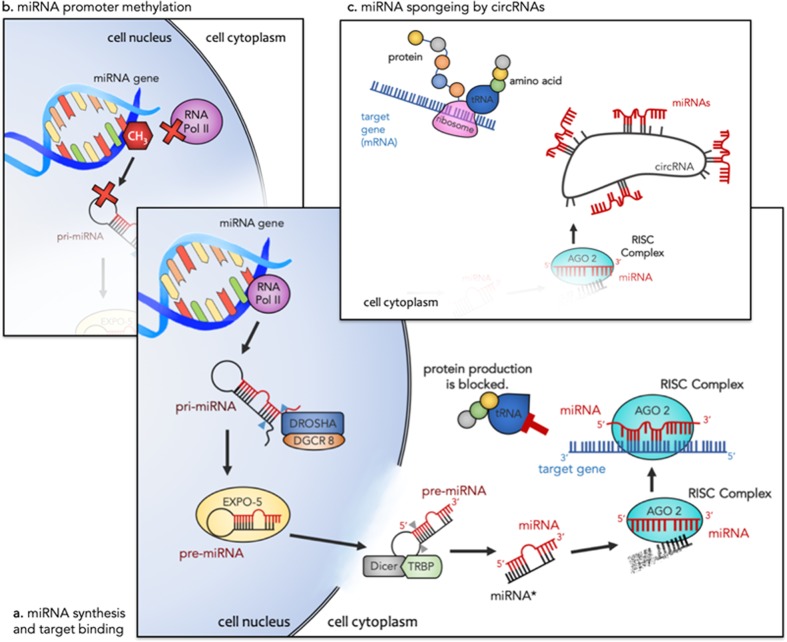Fig. 1.
a First RNA polymerase II transcribes the miRNA gene resulting in a pri-miRNA with a hairpin loop structure. This structure is cleaved by DROSHA and DGCR8 (blue arrows) into a pre-miRNA and transported out of the cell by EXPO-5. Dicer and TRBP cleave away the loop structure (gray arrows) leaving a miRNA-miRNA* duplex. AGO 2 loads the mature miRNA (red), forming the RISC complex, and the miRNA* strand (black) is degraded. RISC can bind to specific gene targets and lead to translational repression. b Methylation at the miRNA gene promoter region can reduce transcription of pri-miRNAs by RNA Pol II. This results in decreased production of mature miRNAs and altered downstream repression of their target genes. c In the presence of compatible circRNAs, there is competition for miRNA binding. Each circRNA can have multiple binding sites for a single miRNA effectively reducing miRNA-target gene interactions and their associated translational repression. As a result, both methylation and circRNAs can promote protein production. Abbreviations: miRNA (microRNA), RNA Pol II (RNA Polymerase II), pri-miRNA (primary miRNA), pre-miRNA (precursor miRNA), EXPO-5 (exportin-5), TRBP (Tar RNA-binding protein), RISC (RNA-induced silencing complex), AGO 2 (argonaute), tRNA (transfer RNA), CH3 (methyl group), mRNA (messenger RNA), circRNA (circular RNA)

